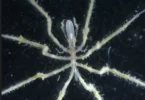Flamingos are known for their striking pink feathers, but there’s so much more to these fascinating creatures. Let’s dive into 10 fun and surprising facts about flamingos that will give you a new appreciation for these remarkable birds!
1. Flamingo Nests Are Made of Mud
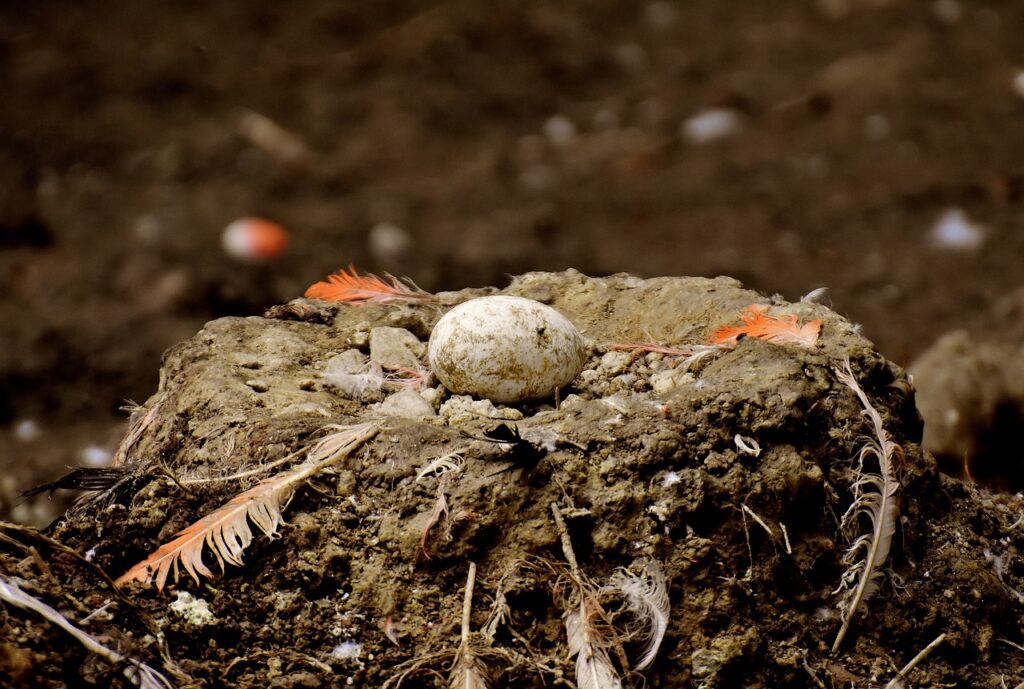
Flamingo nests resemble small mud volcanoes, providing just enough space for one large egg. Flamingos are monogamous and share parenting duties. Both the male and female work together to build the nest and incubate the egg. Flamingo chicks are born with white-gray, fluffy feathers and straight bills. It takes years for them to develop their signature pink plumage and the iconic hooked shape of their bills.
2. Their Pink Color Comes from Their Diet
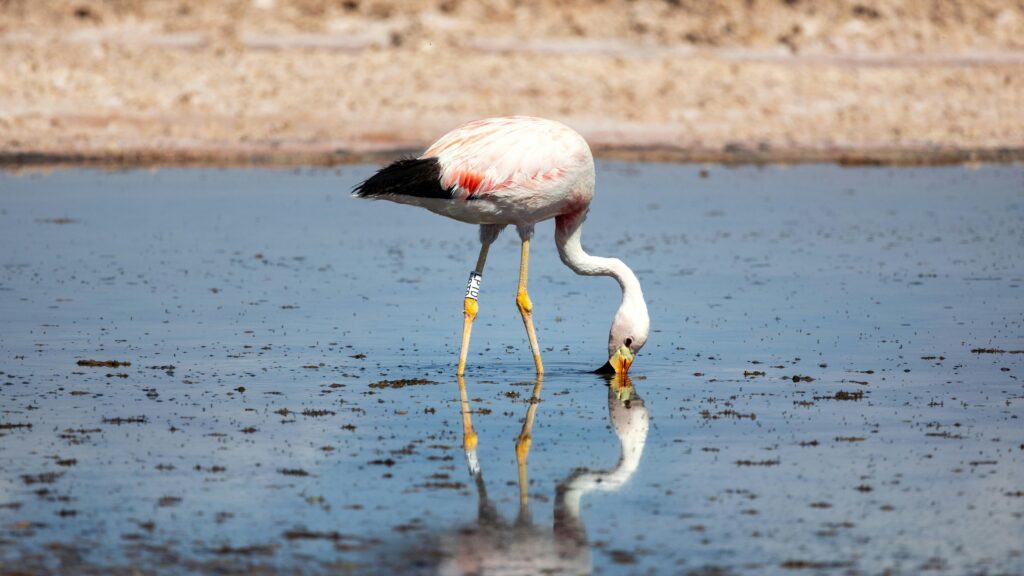
Flamingos are truly a reflection of what they eat. Their vibrant pink hue comes from carotenoids, natural pigments found in the algae and brine shrimp that flamingos consume. As the birds metabolize these pigments, their feathers take on the rosy hue that flamingos are famous for.
3. Flamingos Are Filter Feeders That Eat Upside Down
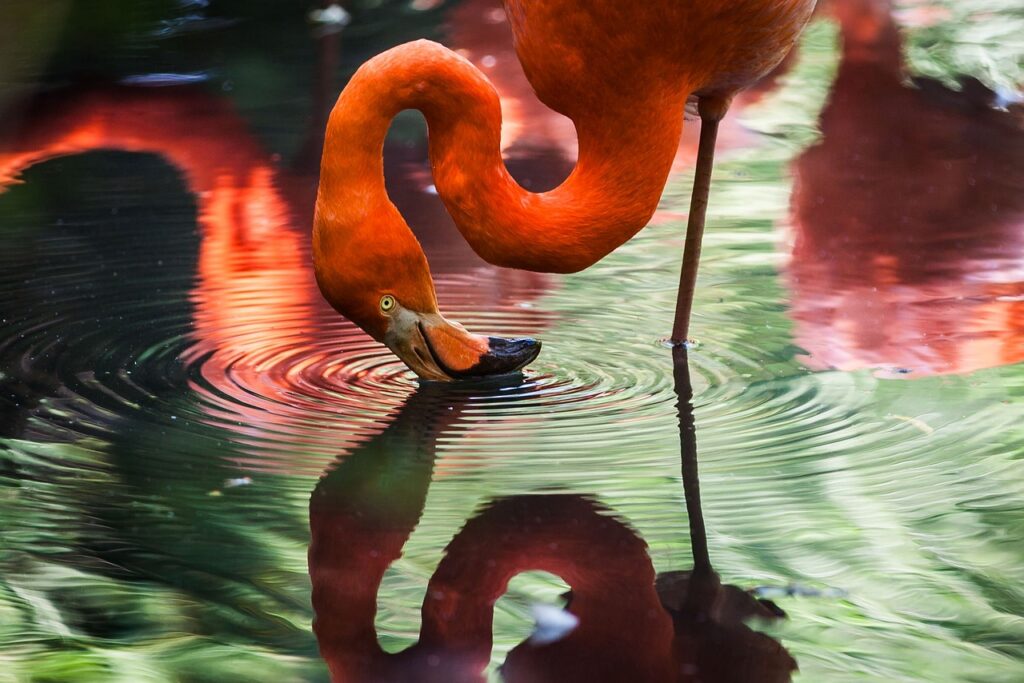
Flamingos are filter feeders, similar to baleen whales and oysters. Their diet includes algae, small seeds, crustaceans like brine shrimp, and other tiny organisms found in shallow waters.
To eat, a flamingo turns its head upside down, submerging its bill in water. It then sweeps its head from side to side while using its tongue to pump water in and out. The comb-like plates on the edge of its bill filter out water, trapping food particles inside.
4. A Group of Flamingos Is Called a Flamboyance
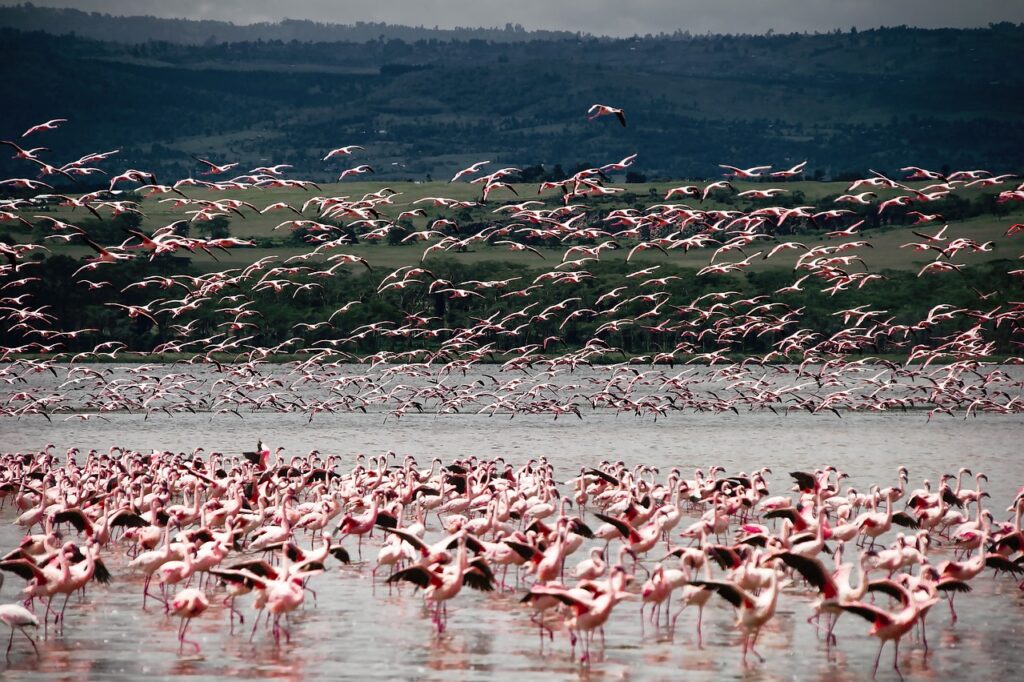
Just like a group of crows is a “murder” or geese a “gaggle,” a group of flamingos is charmingly called a “flamboyance.” Other collective terms for flamingos include “stand,” “colony,” and “pat.”
5. There Are Six Species of Flamingos
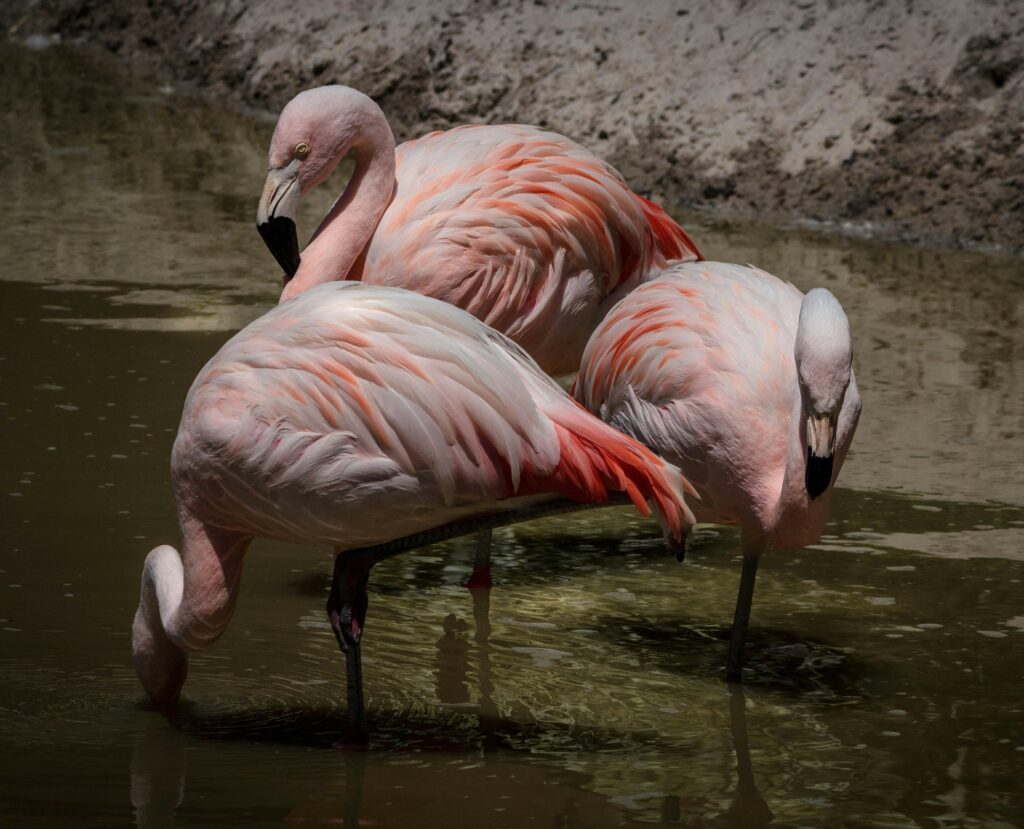
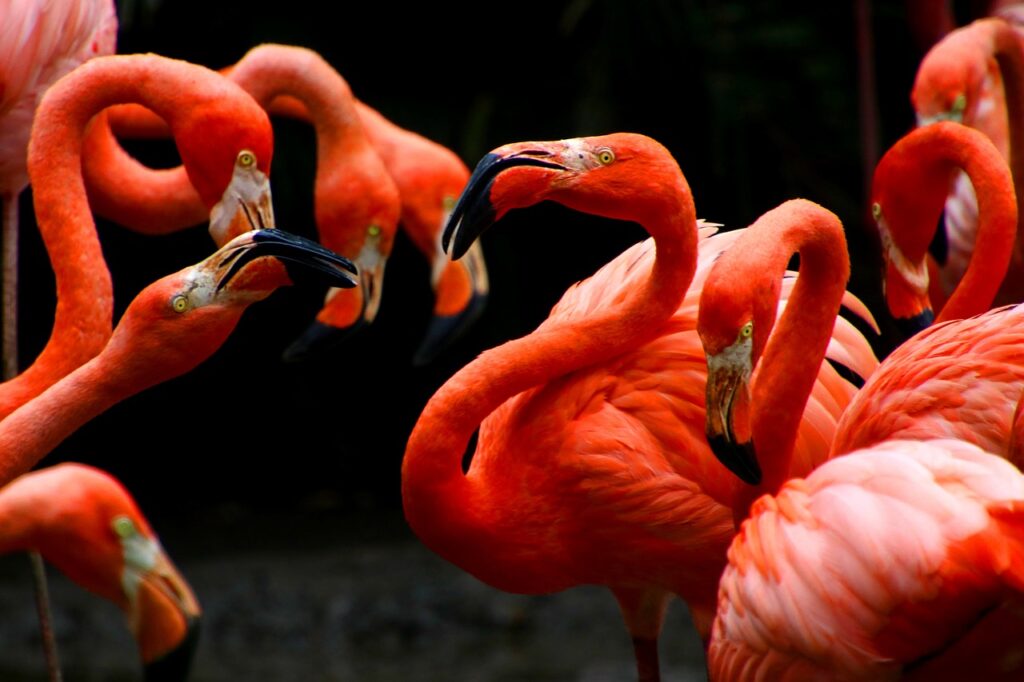
Flamingos are not all the same. The six species include:
- Greater Flamingo: Found in Africa, Asia, and Europe, and the largest of all species.
- Lesser Flamingo: The smallest species, with over 2 million individuals in Africa and southern Asia.
- Caribbean Flamingo: Native to the Americas.
- Chilean, Andean, and James’s Flamingos: These species are native to South America, with the Andean flamingo being the rarest, with fewer than 40,000 individuals.
6. Flamingo “Knees” Don’t Bend Backward
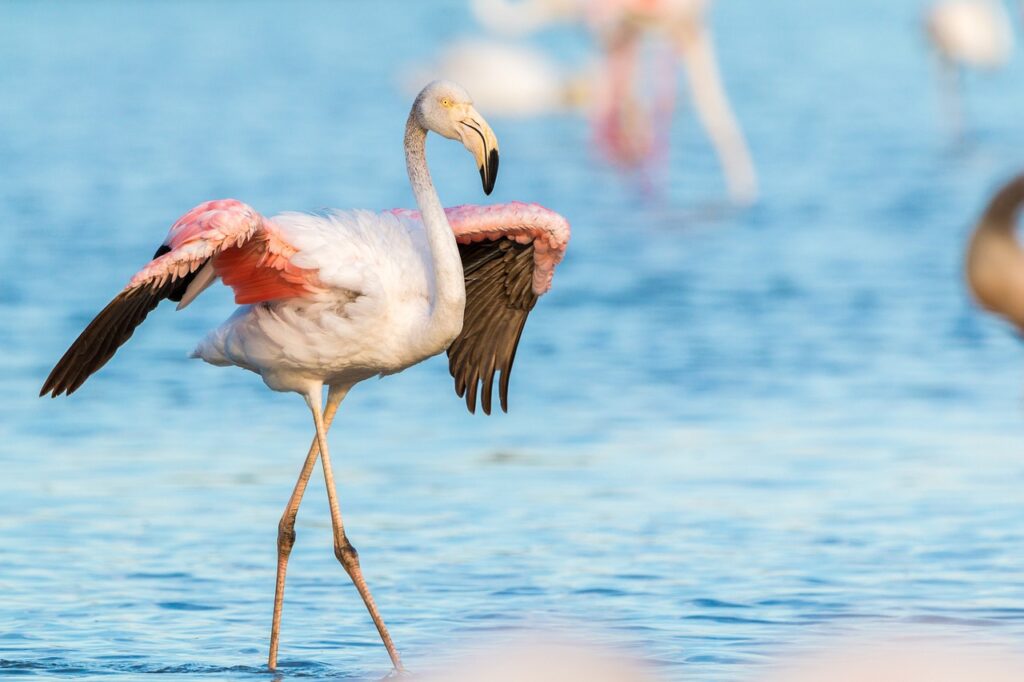
What appears to be a flamingo’s “knee” is actually its ankle joint! The actual knee is hidden higher up the leg, closer to the body. Think of a flamingo as standing on its tiptoes—the “bending” you see is at the ankle, not the knee.
7. Some Flamingos Thrive in Extreme Environments
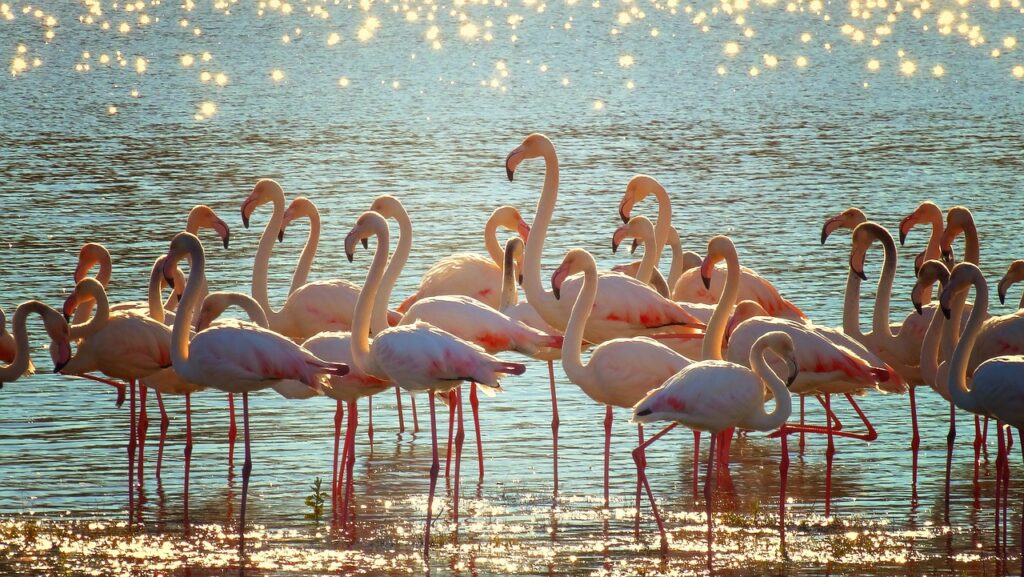
While flamingos are often seen in shallow saltwater or brackish lagoons, some species breed in highly salty soda lakes. These extreme environments, with their corrosive carbonate salts, are uninhabitable for most animals. Flamingos survive thanks to specialized adaptations, like tough leg skin. However, salt deposits can occasionally harm flamingo chicks by restricting their movement.
8. Flamingo Parents Feed Chicks “Crop Milk”
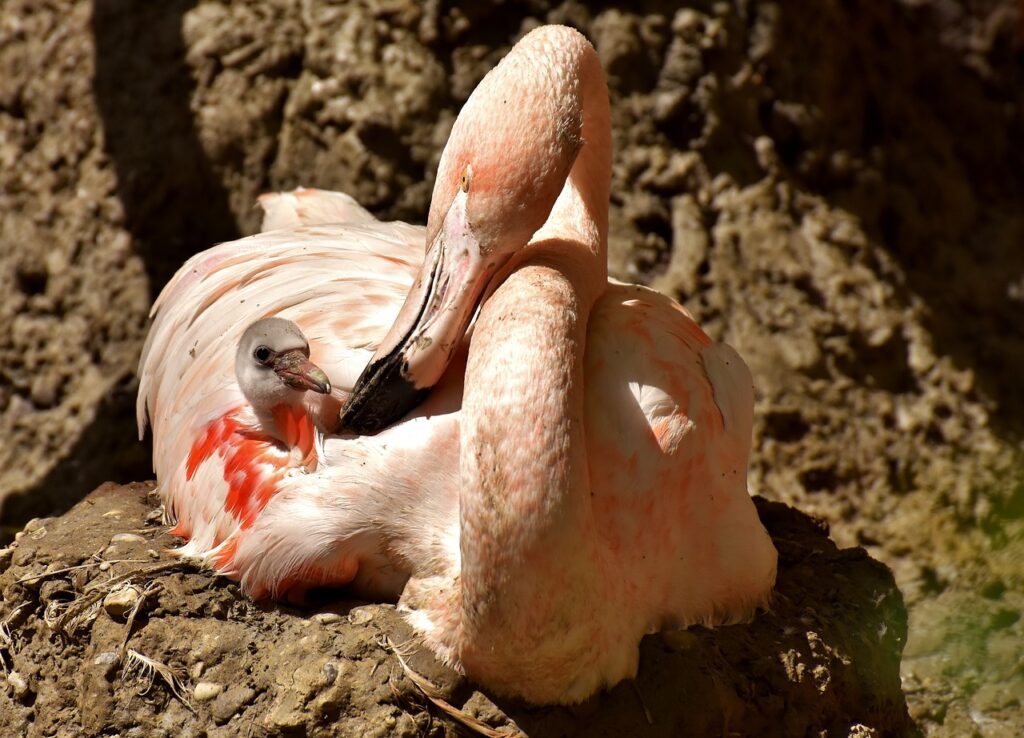
Flamingo parents produce a nutrient-rich liquid called crop milk in their throats. Both parents can regurgitate this milk to feed their chicks, providing essential proteins and fats until the chicks are ready to forage on their own.
9. Flamingos Can Fly
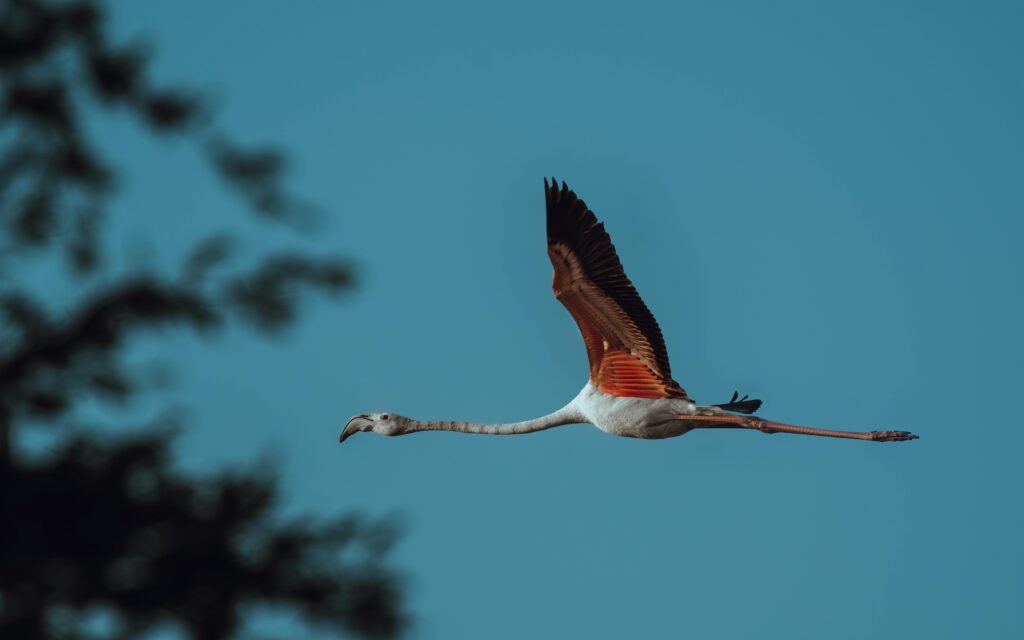
Although they’re often seen standing or wading, flamingos are strong fliers. They travel to breed, migrate to better feeding areas, or move to warmer regions during winter. Flamingos usually fly at night when migrating long distances.
10. They Can Sleep While Standing on One Leg
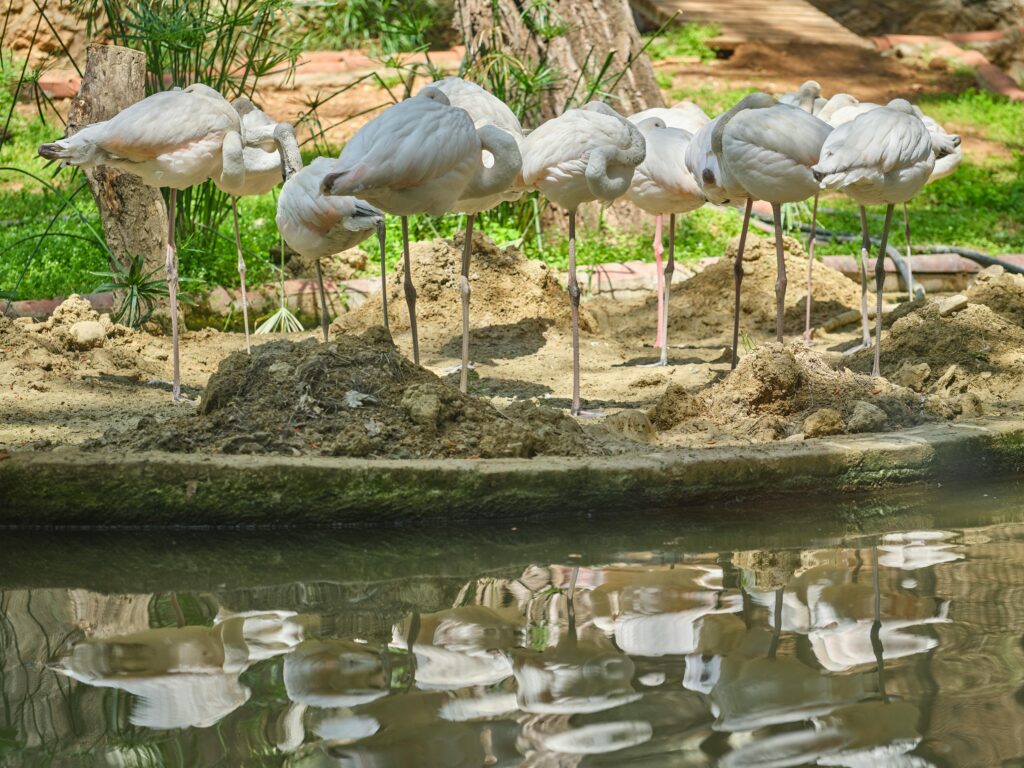
Flamingos are known for their iconic one-legged stance, even while asleep. Research suggests that standing on one leg uses less muscle energy than standing on two. Additionally, tucking one leg under their body helps flamingos conserve heat by reducing heat loss through their limbs.







